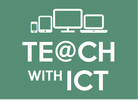Binary Representation of Instructions
in this lesson, students explore how binary can be used to store instructions.
Learning Objectives:
Lesson 1: Theory (Instructions)
Suggested time: 50 mins
Starter
Start the lesson by loading the Little Man Computer simulation (http://www.atkinson.yorku.ca/~sychen/research/LMC/LMCHome.html) (Note: requires Java) and, as a recap, explain to students that the main function of the CPU is to fetch and execute the instructions. Refresh the students’ memories of how the CPU works by showing them an example set of instructions to add two numbers pre-loaded into the simulator (see below).
Learning Objectives:
- Explain how instructions are coded as bit patterns
- Explain how the computer distinguishes between instructions and data
Lesson 1: Theory (Instructions)
Suggested time: 50 mins
Starter
Start the lesson by loading the Little Man Computer simulation (http://www.atkinson.yorku.ca/~sychen/research/LMC/LMCHome.html) (Note: requires Java) and, as a recap, explain to students that the main function of the CPU is to fetch and execute the instructions. Refresh the students’ memories of how the CPU works by showing them an example set of instructions to add two numbers pre-loaded into the simulator (see below).
| Address | Instruction | What it does: |
| 00 | 901 | Input a number and put it in the calculator |
| 01 | 399 | Store the number in the calculator in memory slot 99 |
| 02 | 901 | Input a number and put it in the calculator |
| 03 | 199 | Add the number in memory slot 99 to the number in the calculator |
| 04 | 902 | Output the number which is now in the calculator |
| 05 | 000 | End |
Activity 1:
Give students the 'Representing Instructions' PowerPoint (below) and split the class into groups of 2 or 3.
Give students the 'Representing Instructions' PowerPoint (below) and split the class into groups of 2 or 3.
| representing_instruction.pptx |
Explain to students that their main task is to create a podcast explaining how instructions are interpreted by the computer in binary.
Demonstrate how to create a podcast using GarageBand (Alternatively you could use Audacity (Free). Give each group a blank podcast storyboard (see below) along with an example (below) and explain to the students that they must complete the storyboard and have them approved before creating their podcasts.
Demonstrate how to create a podcast using GarageBand (Alternatively you could use Audacity (Free). Give each group a blank podcast storyboard (see below) along with an example (below) and explain to the students that they must complete the storyboard and have them approved before creating their podcasts.
| podcast_story_board.pdf |
| podcast_storyboard_sample.pdf |
For hints and tips on creating classroom podcasts, click here: http://recap.ltd.uk/podcasting/info/educatortips.php
Activity 2:
Students to record their podcasts.
Tip: For students who do not like recording their voice there are a number of free text-to-speech tools online which allow you to download your text-to-speech sample as an .mp3 / .wav. Here are two of my favourites:
AT&T Text to Speech Demo - http://www2.research.att.com/~ttsweb/tts/demo.php
fromtexttospeech.com - http://www.fromtexttospeech.com
Plenary:
If time allows, play some samples of students’ podcasts to the rest of the class. (see example below).
Students to record their podcasts.
Tip: For students who do not like recording their voice there are a number of free text-to-speech tools online which allow you to download your text-to-speech sample as an .mp3 / .wav. Here are two of my favourites:
AT&T Text to Speech Demo - http://www2.research.att.com/~ttsweb/tts/demo.php
fromtexttospeech.com - http://www.fromtexttospeech.com
Plenary:
If time allows, play some samples of students’ podcasts to the rest of the class. (see example below).
Tags: Binary, Instructions, GCSE Theory, Bit, Data, Binary Representation, Binary Representation of Sound, Sound, MP3, WMV, WAV, encoding, Amplitude, Frequency, Pitch, Sample rate, Tags: GCSE, KS4, Theory, Computing Theory, CS Theory, Binary, Binary Representation, binary 2, binary conversion, how to do binary conversion, counting binary, binary number to decimal, binary 101, 8 binary, binary digits, binary digit, meaning of binary

